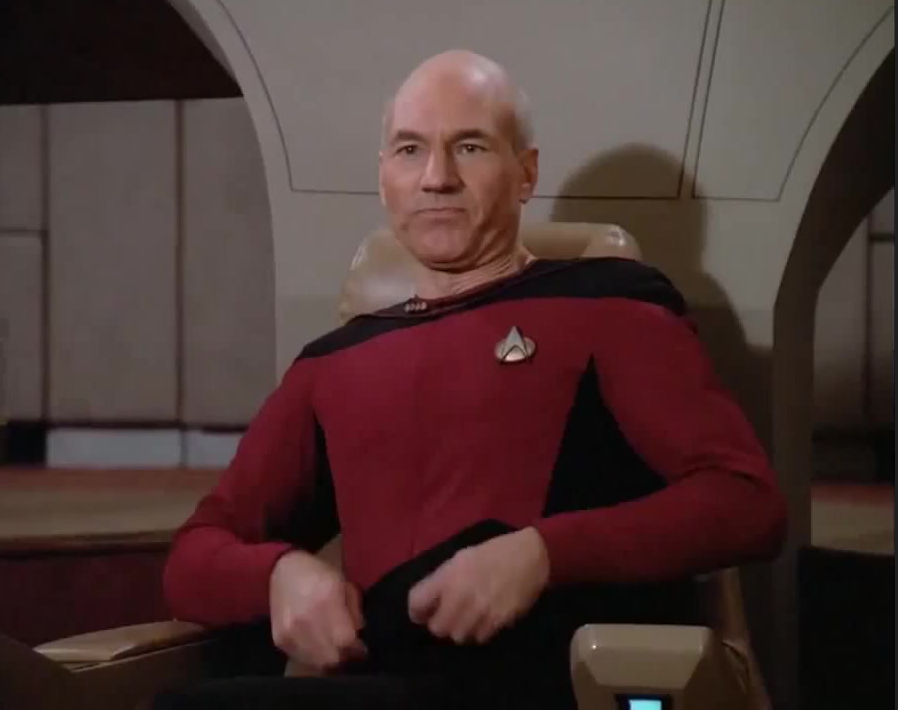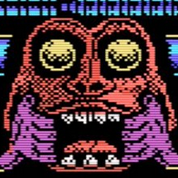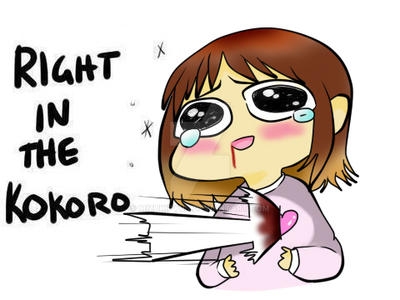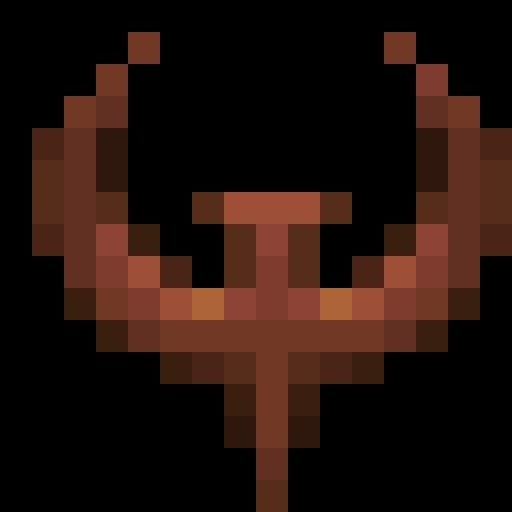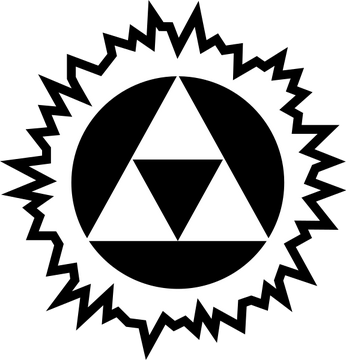The moment GMan’s mouth fucking moved in Half Life when he talked. 🤯
I still remember the first time a character’s feet lined up when they walked up stairs. Couldn’t believe it lol. I wish I could remember what game it was but it was SO long ago. I do remember later being similarly impressed by MGS2 stairs
The weather effects and condensation on Samus’s visor in Metroid Prime had this same feeling. It’s been quite a while since such minor graphical details in a game held me in such awe.
Going back even farther I remember my mind being blown when the rain in Ninja Gaiden on nes changed directions
Anymore = ever again
Any more = any further
They’re two different things.
They don’t make games that look like that anymore, even though we thought the graphics couldn’t get any more realistic back then.
You know everyone was scanning your comment hard to see if you made any grammar mistakes.
@ThirdWorldOrder @otp Right. Lol
I can tell your apart of the grammar police.
Bruh, english has thousands of words with multiple means and the same spelling. You understood the meaning.
“Oh no, they’re trying to teach me about grammar! I must resist knowledge!”
deleted by creator
On Lemmy and Reddit, the grammar police are in full force, well-equipped, and numerous. Resistance against them is futile.
They’re teaching grammar to anyone that’ll read their comment lol calm down
Tbf these games were made with crtvs in mind and crtvs blurred the edges making things look smoother. They only look so blocky nowadays because newer tvs have better resolution so you can clearly see all the blocky edges.
I have never in my life seen someone refer to CRT TVs as crtvs and it’s really fucking with my head lmao
It’s a habit I picked up from my dad lol
He always called them crtvs because he thought the “tube” part of cathode ray tube was unnecessary when using the acronym. You know it’s a tube because what else would a cathode ray be in?
I liked it better when I thought it meant Cathode Ray TubaVision
I like it. Gonna use the one other time this possibly comes up in my lifetime.
Cathode Ray TubieVision

Good name for an android porn site!
deleted by creator
deleted by creator
Emulators have filters for that, though.
Btw, is there something similiar for wine? Not vkbasalt, because dxvk can create issues with too big address space in older games.
Composite connections more than CRTs. An RGB SCART connection reveals so many sins.
I think it depends… Definitely with 2d games, but for instance, the heads and fists in Goldeneye (N64) always looked blocky
Playstation textures used a lot of dithering. Composite connections blurred them out, but they look awful on modern displays.
It is my opinion that we reached peak graphics 6 or 7 years ago when GTX1080 was king. Why?
- Games from that era look gorgeous (eg Shadow of Tomb Raider), yet were well optimized to run high/ultra at FHD on RX570.
- We didn’t need to rely on fakery like DLSS and frame generation to get playable frame rates. If anything, people used to supersample for the ultimate picture quality. Even upping the rendering scale to 1.25 made everything so crisp.
- MSAA and SMAA antialiasing look better, but somehow even TAA from that era doesn’t seem as blurry. Today, might as well use FXAA.
Graphics today seem ass-backward to me: render at 60…70% scale to have good framerates, FX are often rendered at even lower resolution, slap on overly blurry TAA to hide the jaggies, then use some upsample trickery to get to the native resolution. And it’s still blurry, so squirt some sharpening and noise on top to create an illusion of detail. And still runs like crap, so throw in frame interpolation to get the illusion of higher frame rate.
I think it’s high time we should be able to run non-raytracing graphics at 4k native and raytracing at 2.5k native on 500€ MSRP GPU-s with no trickery involved.
We peaked when we had full hd. After all what could top full high definition… fuller high definition? That would just be silly.
GPUs are getting better, but the demand from the crypto and ML AI markets mean they can just jack up the price of every new card to higher than the last so the prices have stopped dropping with each new generation.
Intel saving us with their gpu prices, too bad they didn’t made good drivers YET
- We didn’t need to rely on fakery like DLSS and frame generation to get playable frame rates.
If truly believe what you wrote, then you should never look into the details of how a game world is rendered. It’s fakery stacked upon fakery that somehow looks great. If anything, the current move of ray tracing with upscaling is less fakery than what was before.
There’s a saying in computer graphics: if it looks right, it is right. Meaning you shouldn’t worry if the technique makes a mockary of how light actually works as long as the viewer won’t notice.
That’s the point
Sure, all graphics is about creating an illusion.
But there’s a stark difference between optimization like culling, occlusion planes, LOD-s, half-res rendering of costly FX (like AO) and using a crutch like lowering the rendering resolution of the whole frame to try and make up for bad optimization or crap hardware. DLSS has it’s place for 150…200€ entry-level GPU-s trying to drive a 2.5k monitor, not 700€ “midrange” cards.
But there’s a stark difference between optimization like culling, occlusion planes, LOD-s, half-res rendering of costly FX (like AO)
and using a crutch like lowering the rendering resolution of the whole frame to try and make up for bad optimization or crap hardware.There is not a stark difference if you were to describe the techniques objectively and not twist it to what you feel they’re like.
There are so many steps in the render pipeline where native resolution isn’t used. Yet I don’t here the crowd complaining about shadow map size or how reflections are half res. Upscaling is just another tool that allows us to create better looking frames at playable refresh rates. Compare Alan Wake or Avatar with DLSS with any other game without DLSS and they will still come out on top.
DLSS has it’s place for 150…200€ entry-level GPU-s trying to drive a 2.5k monitor, not 700€ “midrange” cards.
Just because you’re unhappy with Nvidia’s pricing strategy doesn’t mean you should slander new render techniques. You’re mixing two different topics.
I used to have a subscription to Game Informer magazine. I very specifically remember the multi page preview for the upcoming game, Oblivion. The pictures they had in there, I swear to God, were actually pictures of trees and grass. The fidelity was unparalleled and it was the peak of what games could do. Idk why that article sticks out so much, but it felt like the top of the mountain.
I think even at the time we could all tell that Oblivion’s faces had fallen down the mountain on the way up a couple of times.
I had Quake running with software 3D, got a 3DFX board and patched Quake to run with hardware 3D and the results just blew my mind…
I remember upgrading to a voodoo 3dfx card around the time transparent water was possible in Quake. The graphics blew me away and the ability to see players in the water gave a ridiculous advantage.
I remember the graphics “blue” me away too - I mean that lovingly. That the graphics colours looked much cooler compared to on the Riva TNT (actually this is my memory of Quake 2 (particularly Q2DM1),).
I’m still torn over which look I prefer.
Hah I get that but it was for half life 1 and I thought the graphics were amazing. Rainbow 6 rogue spear was my first PC game and I thought that was the pinacle of graphics… fuck I’m old.
Dayum, rogue spear, you made my heart aching from nostalgia
If you want a real nostalgia kick go here:
https://youtu.be/ZiSTywA6fHY?si=6mGUbtMeqV4OG_vC
I remember the game disc doubled as a sound track of you put it in a CD player.
For me it was reading in Playstation Magazine that there were melting ice cubes in the then upcoming Metal Gear Solid 2. I’m not even sure PS2 had been released yet at the time, so I was just awe struck thinking wow it’s getting so powerful and detailed that even ice cubes in a sink are accounted for.
Man for me it was playing Halo CE on the original Xbox, you could see the individual blades of glass on the ground texture! I was absolutely blown away haha
I can relate, but by the time Oblivion came out I was already starting to get jaded about graphical fidelity. What I can tell you is that I ogled over a similar preview for Morrowind, and actually built my first PC specifically targeting the recommended specs to run it in all its glorious glory!
Tale as old as time I suppose
Christmas of probably 98 or 99, my older brother gave my younger brother and I his PlayStation. He had Final Fantasy VII, and that was probably when I popped my graphics cherry. I was astounded when I went back to play it years later.
And then you look at it again now and realize the truth
At least we were happy back then
Someone already mentioned those graphics were optimized for old CRT TV’s, but also consider the fact that it was simply the best wed seen, and it blew our minds.
Just imagine what top notch realism will be 20 years from now, assuming it’s not all DLC for the same old stuff, obviously.
Honestly, a good CRT shader is a real game changer for emulation. Many emulators have the ability to add a mesh grid over the top of the image, but this is just about the worst way to try to emulate a CRT; It doesn’t actually emulate CRT pixels, and the black grid laid on top of everything simply reduces the overall image brightness.
For an example of a good CRT shader, consider looking into CRT Royale. The benefit to a shader is that it’s actually running each frame through a calculation before it reaches your screen. So it is actually able to emulate a CRT properly. Shaders can actually emulate the individual red/green/blue pixels of CRTs, emulate the bloom around white text, emulate the smearing that occurs with large color differences, etc… It really does make old games much more pleasant to look at.
We hit diminishing returns a while ago. It will be much harder to find improvements, both in terms of techniques and computation.
Consider that there is ten years between Atari Pitfall and Wolfenstein 3D, ten years between that and Metroid Prime, and ten years between that and Mass Effect 3, and then about ten years between that and now. There’s definitely improvement between all those, but once past Metroid Prime, it becomes far less obvious.
We’ve hit the point where artistic style is more important than taking advantage of every clock cycle of the GPU.
Graphics 20 years from now will be incrementally better, but not mind-blowingly so. We’re rapidly approaching games that are 20 years old still looking pretty decent today.
This is even earlier, the 80s, but I remember getting a not especially good game called The Halley Project for my Apple II, but I would load the game over and over again because the intro had a song with real vocals and guitar, something basically unheard of on an Apple II, or virtually any other computer at the time.
So I loaded it. Over and over.
And this is no different.
It’s so hard to go back. Possibly impossible, to remember what it was like to see those things from that point in history.
It’s still happening, there’s just so much of it now we’re more aware of what the improvements actually are on a technical level, that we’ve come to expect it even before release of the lastest thing. And it’s mostly disappointing now because we’re chasing that same high.
The changes are more incremental now too. It’s slightly better textures here, better lighting there, maybe a studio puts extra effort into motion nature and animations. But it’s not leaps and bounds better every generation anymore like it used to be.
There was that video going around a couple days ago comparing Arkham Knight to Suicide Squad and that’s a great example of graphics not getting noticeably better if a studio doesn’t really try for it.
But I’ll bet games that start coming out with the latest Unreal Engine, like Senua’s Saga, are going to give some of that feeling of amazement again.
For me it wasn’t a video game but adjacent - I saw Final Fantasy: The Spirits Within in 2001 and thought “well, that’s it, computer graphics have achieved photorealism and nothing could possibly ever be better.”
Didn’t get the “graphics can’t get any better” idea, however, when Quake came out, and we turned on GL graphics, it really hit me that eventually graphics could, eventually, be actually realistic. Like, it is hard to explain to people born after this era the INSANE leap forward Quake was.
Oh, man, I’m about to relitigate an almost 30 year old nerd argument. Here we go.
I thought Quake looked like crap.
It’s brown, and blocky and chunky and in software mode at 320x200 it’s barely putting together a readable, coherent picture at all. Compared to what the peak of legacy tech was at the time, which was probably Duke Nukem 3D, I thought it was a genuine step backwards.
Now, it played well, it was fast and they got a ton of mileage out of the real 3D geometry to make crazy and cool level designs. But visually? Hot garbage.
You’re right that the game changer was actually 3D acceleration, and Quake did come to life when it started hitting HD resolutions of 480p or (gasp) 800p, comparable to what we were already getting in Build engine games and 2D PC games elsewhere, but the underlying assets are still very, VERY ugly. To me it all came together in Quake 2, which was clearly built for the hardware. That’s when I went “well, I need one of these cards now” and went to get a Nvidia Riva.
I have no complaints about Quake’s sound design, though. I can hear it in my head right now. No music, just sound effects. I don’t know what that shotgun sound is taken from, but it’s definitely not a shotgun and it sounds absolutely amazing.
Oh, and on the original point, I’m not super sure of “graphics can’t get any better” beign a thing that I thought, but I do remember when somebody showed me a PS2 screenshot of Silent Hill 2 gameplay in a magazine I mocked them for clearly having mistaken a prerendered cutscene for real time graphics. Good times.
I will agree with you. Quake came out and really stretched the hardware of the time.
I can remember timedemos on a 486/80-- a slow machine for the time, but one that would not be absurd for an ordinary home user- and it was pulling less than 1 frame per second, on a machine where Heretic was playable and had a richer, more exciting world. I could see, yes, the enemies are actually made of polygons instead of scaling sprites, but you gave up so much else for it.
I wonder if multiplayer, even more than the “true 3D” is what gave it the sticking power. The lack of story and olive drab level design didn’t matter there as much.
I think long term, absolutely. At the time, though, very few people were playing online, and a lot of the praise heaped on Quake was for the single player game and the visuals, which I never got.
I mean, I was on a Pentium 133, so I could play it pretty much as intended, I just thought it looked ugly. At that point in software mode I didn’t find it looked any better than Magic Carpet, which had stuff like animated waves and water reflections, and you could make a 3D volcano come out of the ground in real time. It’s pretty nuts how far the 3D characters took it.
Side note: Magic Carpet is a technological marvel and we don’t talk about it enough. Peak non-accelerated 3D environments ever, right there.
I looked up magic carpet and dayum it has fire physics, even now not all AAA games have that
Large scale terrain deformation and morphing in real time, procedural fire and magma, gravity physics for objects on slopes and, again, animated, reflective 3D water. All running on software with support for a high resolution mode.
The year before the PlayStation 1 launched.
It is a miracle of dark magic and computer science and I don’t understand how it can possibly exist. That game is the reason every time Peter Molyneux came up with some random, obviously impossible garbage everybody went “alright, but maybe?”
Absolutely this, half a hour ago I’ve seen this game for the first time in my life on YouTube and thinked for myself, is it real? I mean castle appearing out of nowhere is alright, it is possible with that time tech, but red faction like destruction and fire and magma physics and water looking like it was made with shaders, oh my god i was shocked, and without need for gpu on hardware of that time? They made impossible possible
Fyi, quakes’ music and sound effects were made by Trent Reznor (nine inche nails). There were definitely nin logos in Quake 2. He described the “music” not as music but ambient sounds to make things creepy but also contributed the sound effects, presumably for the shotgun also.
Really? I hadn’t heard about that extremely prominent aspect of the game’s development and marketing for thirty years. You don’t happen to have any shocking news about the origins of Super Mario Bros. 2 by any chance, do you?
Alright, alright, I’ll tone down the snark, it’s just… yeah, that reads a certain way.
But also yeah, he kinda killed it. The Q2 soundtrack in particular has been in my music players longer than some European countries have existed.
I jest you not! I was a nin fan before ever playing the game so I was tuned in when I first saw the logos in game. I think if you go back and play even the first level of Q2 you’ll see them. He did 1 also but I’m not sure there were logos in that. It’s even listed on the Wikipedia site if that confirms that I’m not full of crap.
I totally disagree. I liked the design of quake a lot more than duke nukem. I liked the dark, dungeonesque aesthetic, and, even without GL particle physics, thought it was much better looking than it’s predecessors. It was designed to look like huge temples to eldritch gods and it nailed that.
Quake2 was a big improvement in PvP, however I think it had a lot of the same blockiness, the gibb was less impressive, and it suffered a lot of the same issues with color, just instead of brown/black/green/red, it was grey/green/yellow/red. Sure the polygons were smaller, and more numerous, time, and tech, had advanced. However it wasn’t a huge improvement. I also preferred the sound design of the first, and not just the musical sound track, Quake 1 was much more eerie. It really wasn’t until Q3 Arena that the color palate really opened up.
Previous games looked like cardboard cut outs with higher quality pictures glued to them, in a world of plywood covered covered frames also with images glued to them. Quake was like mannequins passing though a brutalist architecture mock-up.
However, 1996 I had and ATI Rage GPU. In 1997 I upgraded to a pent2 mmx with a voodoo that had a secondary 2d card supporting it. So I may have had a different experience.
I don’t think Q2 had nearly as many issues with color as a whole through the game. I mean, it wasn’t the most colourful game either on any given screenshot, but it had more biomes and locations. At the very least they learned how to make outdoors look like outdoors, with the bright red skies contrasting with the grey interiors. Later on they even throw a bunch of green lights around when they’re feeling frisky.
You’re not wrong that Id only stopped making brown games in Quake 3, which if anything is a bit too garish sometimes. I also don’t disagree about your description of early shooters, all I’m saying is that people had been getting good at using that cardboard cutout tech and people had gotten good at parsing it. Moving to full 3D required a few steps backwards to then push the tech back past that point, and Quake 1 was a big muddy mess of a game. If you were able to read brutalist eldrich temples as opposed to sand-colored legos that’s fair, but even with all the flashy new tech it never read like that to me at the time.
I appreciate what you’re getting at, but I also think you forget how grey Duke 3d was.
I agree Quake was too brown and grey, but the idea it was ‘visually hot garbage’ is definitely an outside take. We finally had 3d models that weren’t sprites, not to mention how impressive prerendered Lightmaps were for the time.
I will agree that GLQuake was when the graphics really were at their best.
Man, that’s more like it, I was starting to get weirded out by how little pushback I was getting. And the two of you pushing back are being super civil, even. I guess this conversation has lost a lot of its edge now the games are 30 years old and we’re no longer in school.
Anyway, it does feel like you’re cherrypicking a little bit there. I mean, sure, there’s plenty of grey textures in Dule Nukem, but even if you turn around from that spot you mention the entrance to the cinema is full of reds and yellows, the cop pigs are wearing bright blue and once you get inside the theatre it’s all red curtains and colourful posters. There is surprisingly little in terms of good screenshots or video of software Quake as it was for a legit comparison, and even when I took one it got mushed and compressed to crap, but hey, that version is an extra on the GOG version of Quake, go check it out, it’s an eye openener.
I don’t disagree that Quake was done the “hard way”, and the lighting effects and 3d models were technically impressive at the time, what I’m saying here is the picture they put together with it was not as appealing.
Gamecube resident evil 2002 graphics outpace some AAA games even today
It doesn’t, honestly, but man, at the time a CRT sure did wonders to blend the pre-rendered backgrounds and a lot of the places where stuff came up short. It really did look great.
That’s what I’m talking about, small resolution of crt made it look great https://www.youtube.com/watch?v=C_-9Rw5CJNE
Because we were stuck on “how did they put a whole world in the TV?!” And hadn’t gotten to “but why they triangle?”
3d was huge, it didn’t matter that it was ugly.
Needs to be seen on a CRT. :)
Here’s a decent impression of the times: http://i.imgur.com/mAUyo.jpg
But back in the day (2003-ish) we still had amazing things to look forward to:
- translucency (windows were not see-through)
- realtime lighting and shadows (shadows were blobs below a model)
- metallic reflection, and reflections in general (though working mirrors existed since at least Duke Nukem 3D, but those were a hack; copy the room and player model and flip them around to create the effect of a mirror)
- further viewing distances (though this isn’t a positive, IMO)
- physics (everything was static - models moved, but did not rotate (much))
- inverse kinematics
It’s crazy how far we’ve gotten, but view distances spoil everything (IMO), and graphical improvements have slowed down (not stalled, but definitely slowed down) with Ray Tracing becoming wide-spread being the last big graphical improvement (since 2018).
And even then it was amazing. Honestly, some games of the era just never lost relevancy, and I play a few myself to this day.
(Picture - Star Wars Jedi Knight: Jedi Academy, 2003, the best lightsaber fighting game of all times)

Curious to hear more about your stance on view distance because you felt it needed to be mentioned twice.
I can’t imagine anything about increased potential being inherently bad in an of itself, but it does present more opportunities for level designers to fall short by under-utilizing the spaces.
There is a level of charm that came from the compromise forced by technical limitations which pushed a lot of detail into sky boxes and other 2D workarounds to simulate a 3D space. Even so, it was always frustrating when you became aware that those details would only ever be unavailable to explore up close.
Spyro the Dragon launched in 1998, a year and bit after that issue of Next Generation linked. Spurs was one of the first games to make use of varying levels of detail to expand the view distance.
The level design of Spyro took advantage of this to encourage the player to explore the levels with Spyro’s glide jump by making interesting areas of levels in the distance more visible.
The game received a lot of praise at the time for its graphics and gameplay.
M2 EXCLUSIVE! Full specifications of 1997’s hottest new 64 bit game machine
To think what might have been. The M2 would have tough competition against the PlayStation and N64 but it would have been interesting to see what a 3DO successor would have done to the market at the time, especially if 3DO had stuck with the hardware licensing model.
I remember when the movie Final Fantasy: The Spirits Within was being claimed by people as an animated movie that was so photorealistic, you wouldn’t even be able to tell you were looking at animated characters.

TBF it hasn’t gotten much better than that in the 22 years since. Beowolf was cool, though.
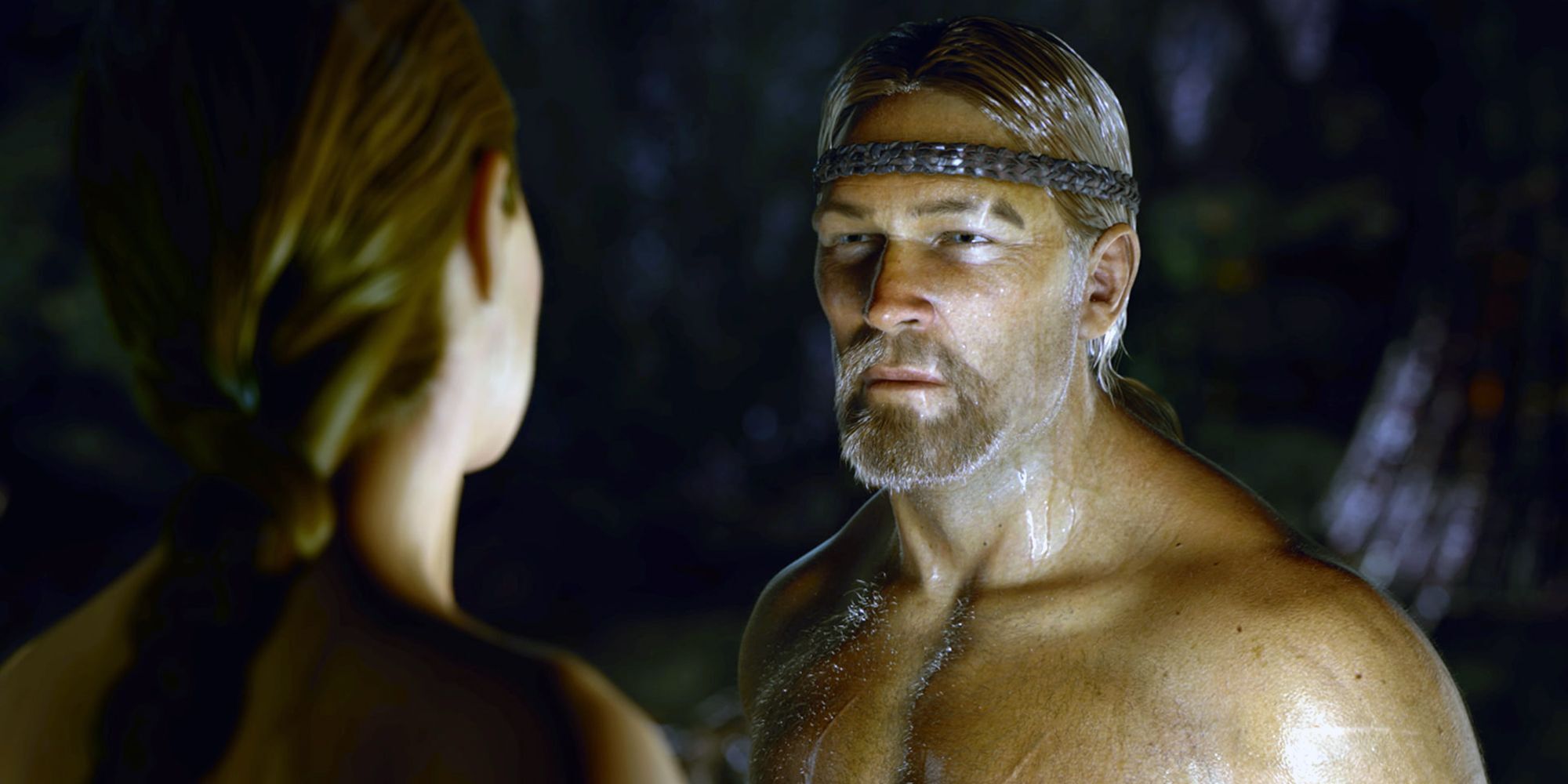
Oh my god! I don’t know anyone else besides me who liked Beowulf!
I saw it in theatres back when those new age 3D glasses came out, it looked really cool.
Yep! Me too! Grendel and his mother were both so cool.
Unreal on a Voodoo3 had fucking reflections on the walkway, and I watched that damn intro over and over.
1999 Aliens vs. Predaror had:
- actual 3D waves. The mesh for the water surface was actually transformed and reacted to your character moving through it creating waves—you could slosh the whole small pools around by running around in them. No shader trickery there.
- explosion fireballs that were 3D and freaking reacted to the environment. Throw a grenade on the floor, the fireball is hemispherical. Throw in into a ventilation shaft, you get a pillar of fire shooting out from the opening. It was absolutely mind-blowing!
- physics engine that allowed physics-enabled objects to be thrown around, bouncing from the walls etc. In 1999. Bizarrely, the objects couldn’t rotate so they always retained the same orientation. It saw use in level design where you could destroy the supports of some stone blocks and let them fall down to block some large pipes.
- flame thrower flame reflected from the walls. You could shoot around a corner or set yourself on fire in confined spaces with it.
- no apparent limit for texture resolution. I remember people modding it with 1k and 2k textures (originals were like 64x64 or 128x128). In 2002.
And today we need ray tracing to mimic fraction of that power
I’m sure there was some trickery going on behind the scenes, and it wasn’t a true reflection.
Yes, it was cubemaps and with mirrors it was exact same rooms with npc copying your moves, but it looked really good, and no need for rt hardware when we got same picture, remember half life 2 reflections and light, nowadays when AAA game dev make game with such graphics it requires ray tracing and dlss to run properly
While true for straight up reflection and glass the raytracing doesn’t do much despite being much more expensive, it is just jaw dropping to see refraction and indirect lighting. Before to have indirect lighting be vaguely credible it had to be all fixed and baked into the textures. Now we can do that with destructible stuff and moving light sources.
You’re absolutely right, but nobody would use ray tracing with destructible stuff because nobody makes destructible stuff like in red faction nowadays
ThisThese caused protests
